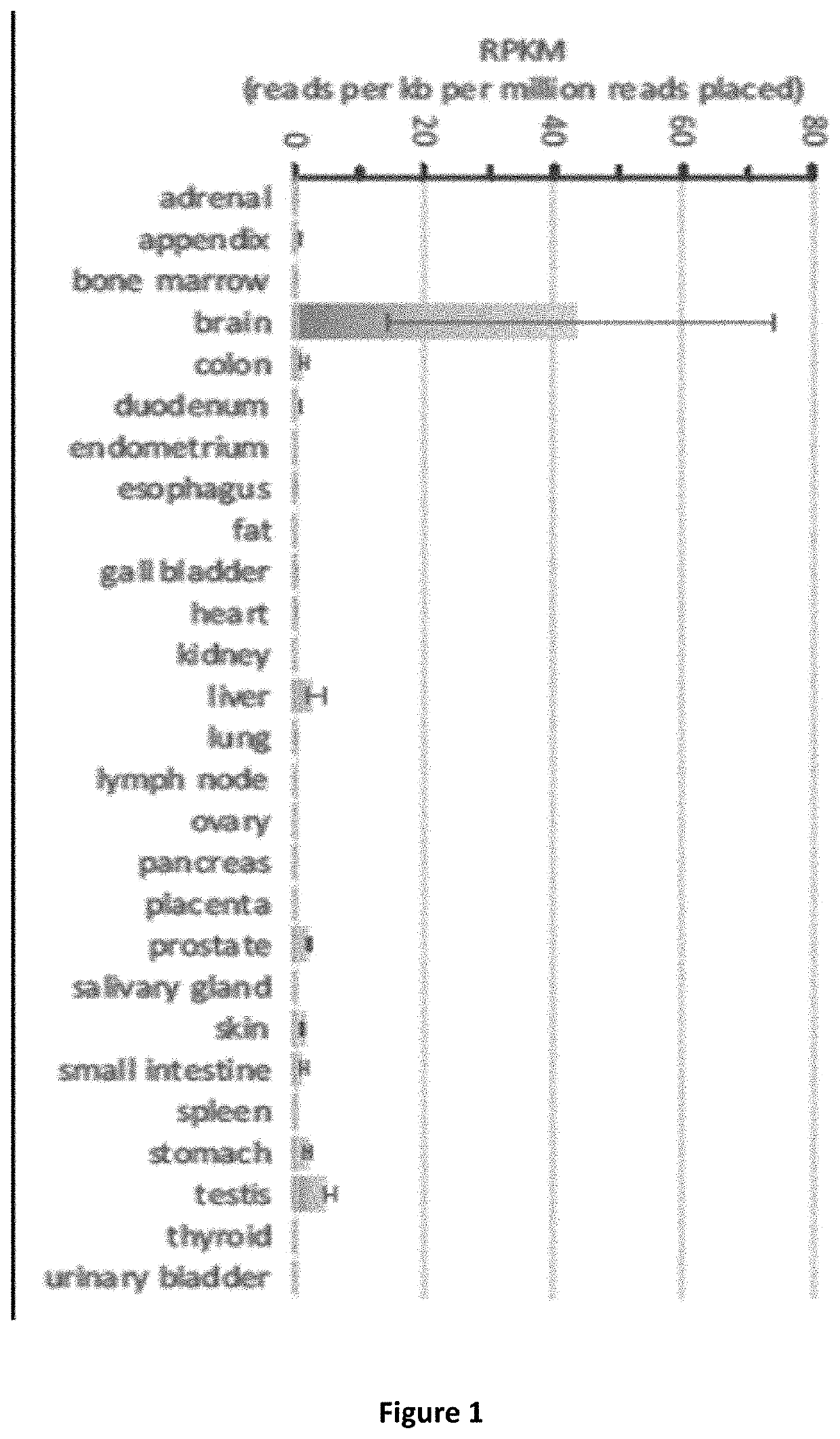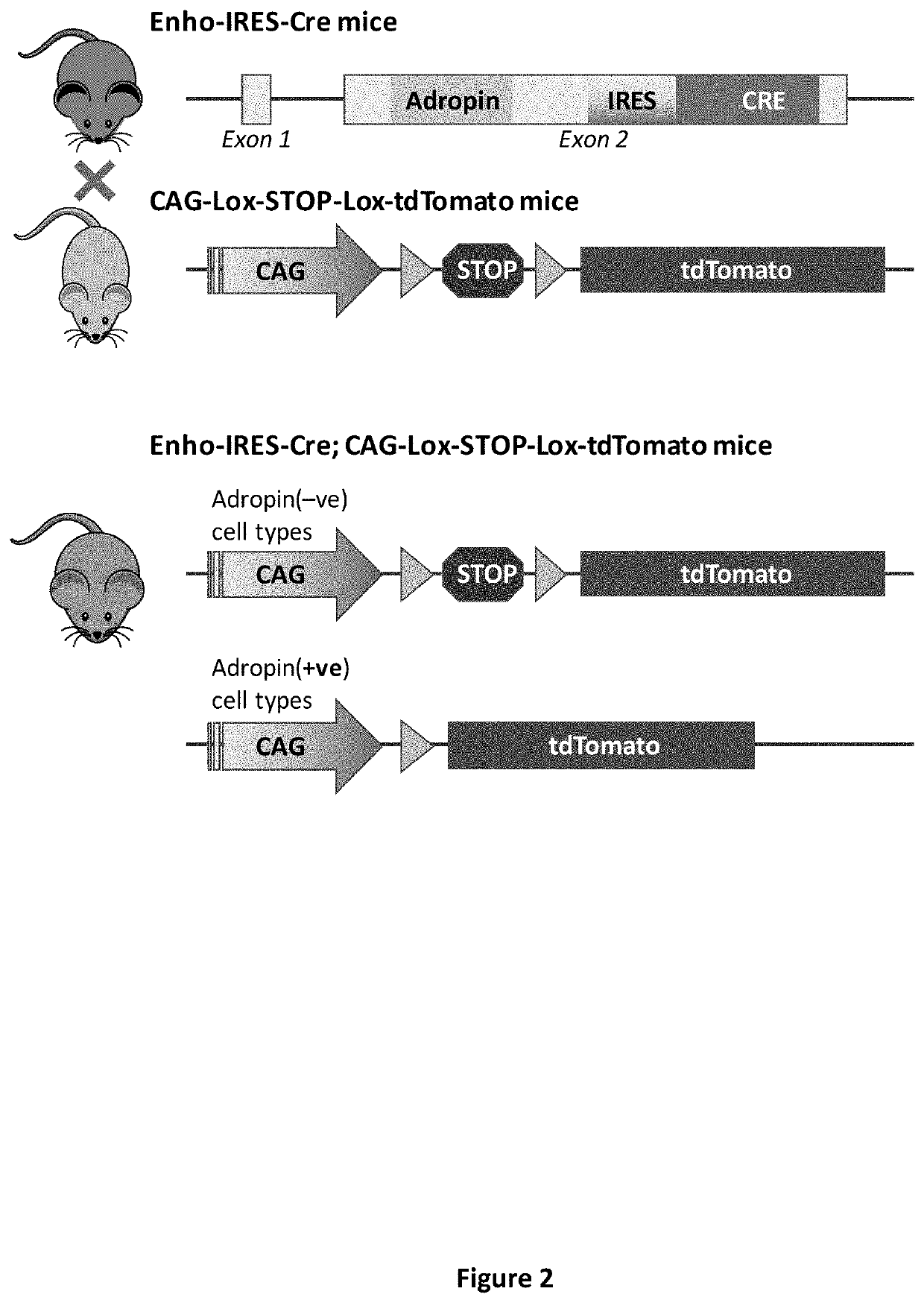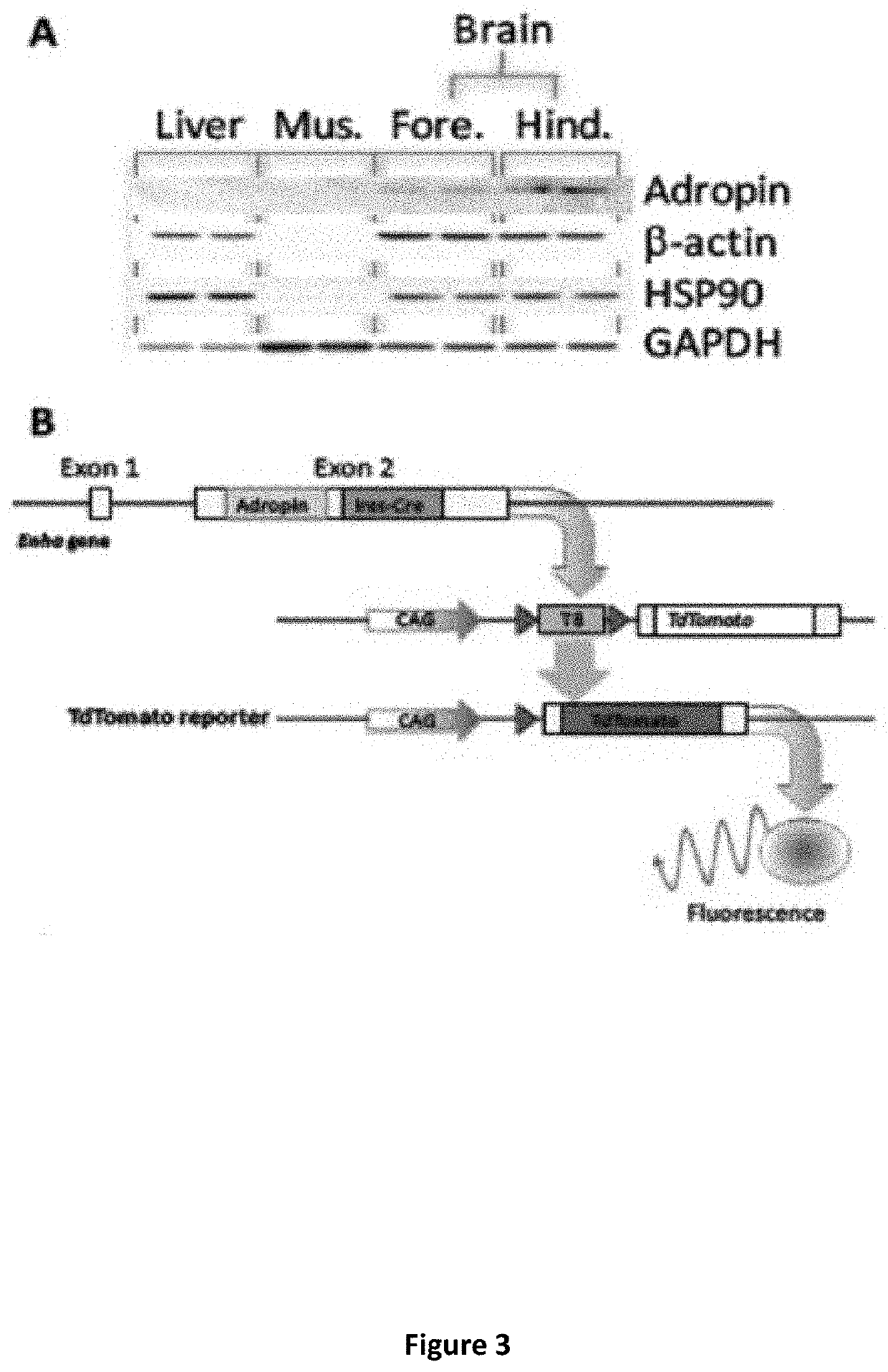Methods and compositions for treating decreased cognitive ability
a cognitive ability and composition technology, applied in the field of methods and compositions for treating cognitive ability, can solve the problems of increasing the risk of neurocognitive decline and few options currently available for treating dementia
- Summary
- Abstract
- Description
- Claims
- Application Information
AI Technical Summary
Benefits of technology
Problems solved by technology
Method used
Image
Examples
example 1
[0062]The Inventors assessed cognitive performance using a strain of B6 mice over expressing the adropin open reading frame under the control of a human bβ-actin promotor (AdrTG) (Kumar, et al., (2008) Cell metabolism, 8, 468-481; Gao, et al., (2014) Diabetes 63, 3242-3252). Analysis of male adropin transgenic mice (AdrTG), mice aged <1 yr, suggested normal performance in tests of declarative memory, and of spatial learning and memory (data not shown). However, at 18 months of age, clear differences in performance were noted (FIG. 3), indicating a neuroprotective role from age related cognitive decline. Alternatively, there may be a “ceiling effect” in younger mice, with improved cognitive performance only observed when the ability for memory consolidation declines in the control group. Performance in tests of declarative memory, and of spatial learning and memory, were not significantly different in AdrTG and littermate controls aged <12 months (data not shown). However, at 18 mont...
example 2
[0063]Continuous exposure to adropin reduces stress in transgenic mice. Adropin transgenic mice show reduced stress indicators compared to wide type. Reduced inflammation (FIG. 6) and reduced oxidative stress (FIG. 7) are seen in AdrTG transgenic mice. Reduced expression of inflammatory cytokines in cortical (FIG. 6A) and hippocampal (FIG. 6B) are seen in tissue samples from 18 mo. old AdrTG relative to age-matched controls. *, p<0.05; *, p<0.0. In addition, increased 4-HNE is seen with aging in male B6 mice (FIG. 7A), but less so in adropin transgenic mice (AdrTG) (FIG. 7B) suggesting a relative reduction in oxidative stress in the AdrTG transgenic mice. Body composition (FIG. 8A-B) and glucose tolerance (FIG. 8C-D) are normal in 18 mo. old AdrTG mice compared to age-matched controls. Reduced SAPK / JNK activity in the nervous system of 18-month old adropin transgenic mice is consistent with reduced neuroinflammation (FIG. 9). The stress-activated protein kinase / Jun-amino-terminal ki...
example 3
[0065]To examine the effects of endogenous adropin on a subject's cognitive ability, 34 male C57BL / 6J (B6) mice, aged 18 months, were treated with exogenous adropin34-76. Mice were purchased from The Jackson Laboratory (Bar Harbor, Me.). After acclimation for 1 month, mice were separated into two weight matched groups of 15 mice: Group 1 adropin34-76 treatment group and Group 2 saline vehicle control.
[0066]The mice were administered a single intraperitoneal injection (volume 100 μl) each morning (0900 h) for 4 weeks. Group 1 was administered adropin34-76 at a dose of 90 nmol / kg / day. Group 2 was administered saline. The peptide was purchased from Neoscientific Inc. Behavioral testing began after 2 weeks of injections. Injections continued though testing until 4 weeks.
[0067]There was no significant effect of adropin34-76 treatment on body weight (mean±SD for weight gain in grams for group 1, 0.7±3.1; group 2, 0.6±2.3, p=0.95 by Student's t-test). One mouse in group 1 died on 08 / 23 / 19....
PUM
| Property | Measurement | Unit |
|---|---|---|
| Fraction | aaaaa | aaaaa |
| Fraction | aaaaa | aaaaa |
| Fraction | aaaaa | aaaaa |
Abstract
Description
Claims
Application Information
 Login to View More
Login to View More - R&D
- Intellectual Property
- Life Sciences
- Materials
- Tech Scout
- Unparalleled Data Quality
- Higher Quality Content
- 60% Fewer Hallucinations
Browse by: Latest US Patents, China's latest patents, Technical Efficacy Thesaurus, Application Domain, Technology Topic, Popular Technical Reports.
© 2025 PatSnap. All rights reserved.Legal|Privacy policy|Modern Slavery Act Transparency Statement|Sitemap|About US| Contact US: help@patsnap.com



